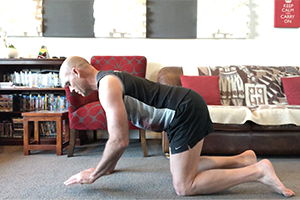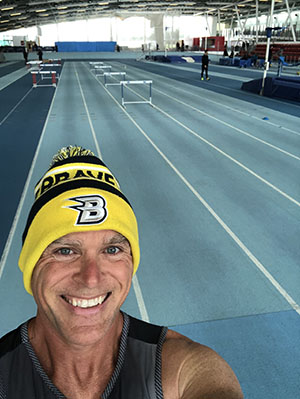 The Covid-19 crisis saw the entire fitness industry shut down pretty much overnight in March this year and while the need for us to keep moving and exercise hasn’t changed, the way in which we could exercise has. What are providers doing to survive until the restrictions are relaxed?
The Covid-19 crisis saw the entire fitness industry shut down pretty much overnight in March this year and while the need for us to keep moving and exercise hasn’t changed, the way in which we could exercise has. What are providers doing to survive until the restrictions are relaxed?
Understanding the size of the impact
According to recent studies conducted into the Australian Gyms and Fitness centres1 and personal trainers2, the fitness industry is worth around $3.5billion and employs around 30,000 people. Of these around 9,000 are self-employed Personal Trainers or fitness instructors. It is also reported that around 30 percent of Australians have a gym membership – although it is not clear how many use their membership on a regular basis.
The fitness industry has grown by around 5percent since 2014 and there are a number of trends leading this growth. The growth, however, is expected to stall over the next 5 years because of increased competition unless the industry continues to drive change in relation to how it delivers services and target customers.
One of the major recent structural changes to the fitness Industry business model has been to make memberships more attractive to time-poor customers who want to access gyms when it suits them; hence the growth in the 24-hour gym. But the flip side to this is an increase in older Australians using gyms but wanting access to full service and structured classes.
Some other key trends in the industry are a focus on Exercise as Medicine, which is a program that provides doctors with resources to assist with recommending exercise to their patients as a way of combating obesity and co-morbidities. The program aims to encourage practitioners to be proactive and prescribe exercise as a form of preventative medicine. Exercise for Stress is another key strategy being recommended by groups like Beyond Blue. Other trends include fitness for older adults, inclusive fitness, small group training and wearable technology.
 Listen to your customers
Listen to your customers
Ken Telfer started Inform Personal Training in 2000 and provides a combination of core strength, sports performance and injury prevention training along with physical exercise. Ken’s passion and understanding of a client’s fitness goals comes from his own experiences with sprinting and having competed around the world. Ken’s approach is to use Pilates combined with indoor and outdoor workouts for his clients. He offers both group classes and personal sessions.
“My work effectively stopped on 23 March, says Ken, and I had to come up with an alternative fast. It was about continuity for both me and my students to ensure I still have a business to go back to when the sector opens up again”.
Ken says he hadn’t really considered Zoom until one of his students in her 70’s suggested it might be a good way to keep the classes engaged. She was comfortable with technology because she was using it to keep in touch with family and friends. “I usually run 4 regular classes a week with 12 students in each and smaller private group sessions. When the shutdown happened, I sent invites out to all my students to attend virtual classes via Zoom. I now have 3 classes with 9 students in each”.
Ken says that he also decided to create content in various forms for his website. “I had some sample class plans so that anyone can just go there and do the class on their own. I have provided 8 class plans and the client can mix these up. As of the beginning of April, I have also added video content, eight 30-minute classes that students can do at home in their own time”.
Ken has a few small group classes where all the participants are in their mid 60’s. “There is one group where I can provide the one-on-one training for one student because the exercise space allows us to practice social distancing, one follows along on Zoom and the third participant can’t join in because her technology isn’t working, so she downloads the class plan and does it at the same time as the others. We are finding a range of workarounds”.
“I even had two clients who were in quarantine who continued classes via Zoom because they wanted to keep up their Pilates practice. The best part of this is that it has actually encouraged them to communicate with their grandkids and friends using technology, which they didn’t to do before”, says Ken.
Don’t forget the social element
Ken says that he is actually really enjoying the fact that all participants log in early and chat beforehand.
“We run the class and then have a coffee together afterwards with various forms of technology and chat about all sorts of things. The social aspect is really important. They really appreciate that they can still get together with their fellow classmates, but many are starting to miss their natural environment of people being together.
“I’m still charging for the classes, says Ken, but am offering a discount given my costs have reduced, but some clients are happy to keep paying the normal price. I’ve also included a donate button to help out my older clients in case they were struggling financially and some are donating more than they would normally pay. I see it as good PR and keeping myself front of mind to encourage students to come back when this all over”.
 New opportunities
New opportunities
“About 4 weeks ago I also started running a night class. I normally run lunchtime classes for different public service departments but obviously I can’t use those premises for the time being. These clients range in age from 30 to 50, so I was trying to fit in around their work and family commitments. I decided to run this at 7pm again mainly as a PR exercise and I decided not to charge for this class. I currently have 8 students in this class and some are using the donate button to pay the same amount as they would be paying for a casual class,” says Ken.
One of the big challenges with teaching Pilates, or any exercise, is to ensure that technique is correct in order to avoid injury. Ken admits that doing this virtually is more challenging but he continues to focus on this for all his clients. To make this easier for his students he has developed and made available 30 short technique videos that focus on key Pilates movements and exercises.
“I’ve had to learn how to use technology to demonstrate these techniques as accurately as possible and of course I am always available to answer any questions”, says Ken.
When this has settled down and we move into the new normal, Ken says that he will continue to put a class up once a week to keep people engaged and hopeful encourage more people to join his other classes.
“I will also continue to put up class videos and general interest content,” says Ken.
He is also considering running a Zoom class going forward to be able to provide the classes at a lower cost. For many, this class will complement and reinforce what they learn in face-to-face classes.
Ken is also considering offering something for people in aged care, or classes that complement other treatments older people with injuries are receiving – the Exercise as Medicine approach.
“The difficulty is that proper and informed personal training cannot be provided without a thorough assessment of mobility limitations and a good understanding of how to do the exercises correctly”.
Ken admits that he finds knowing how to market such a specialised service a challenge but accepts that this will all be part of the business development process and #CBRBusinessUnusual.
1IBIS World: Gyms and Fitness Centres in Australia – Market Research Report, October 2019.
2IBIS World: Personal Trainers in Australia – Market Research Report, March 2019.
